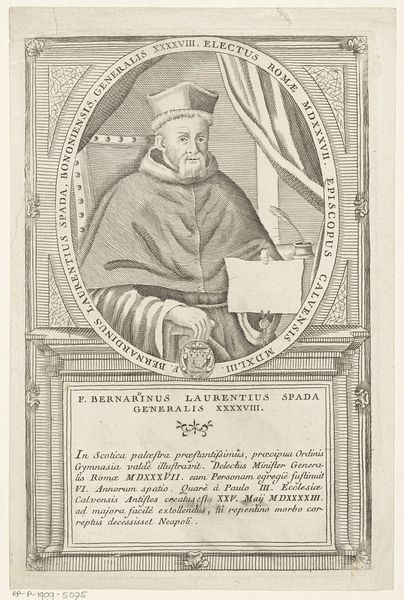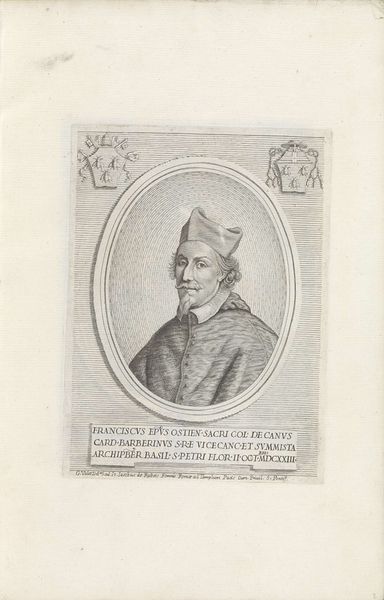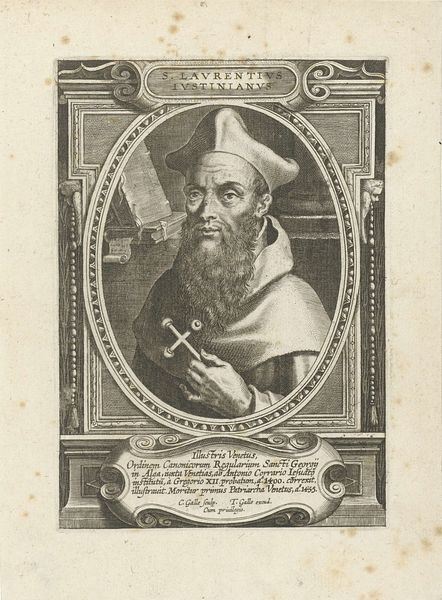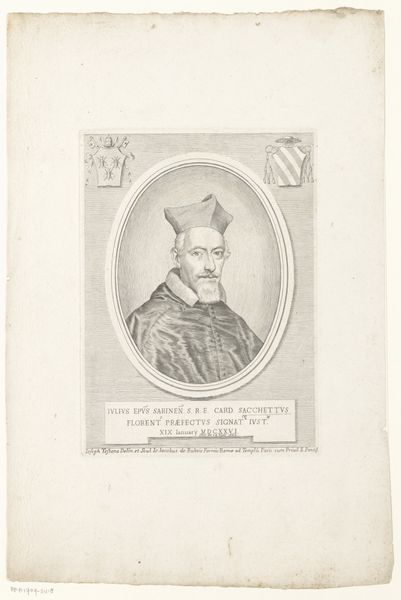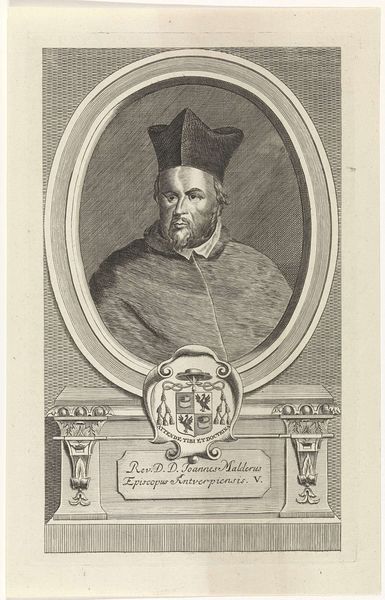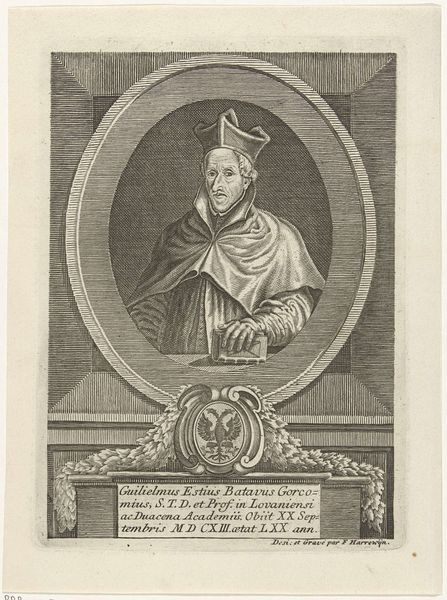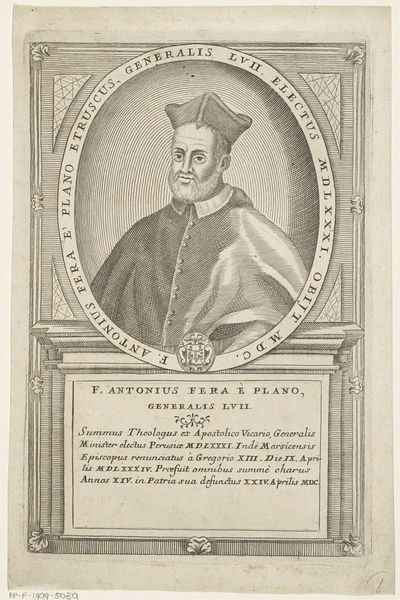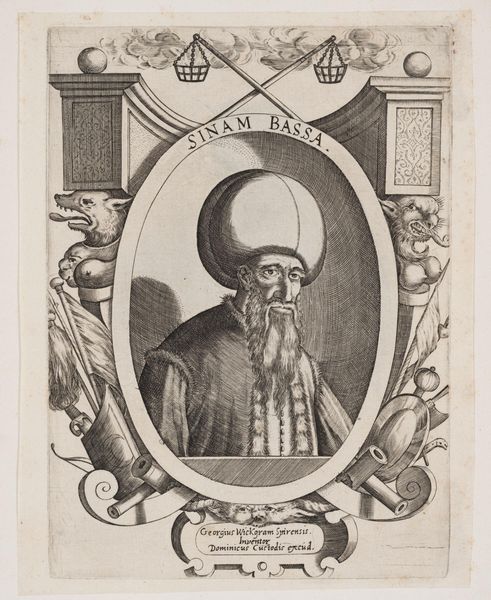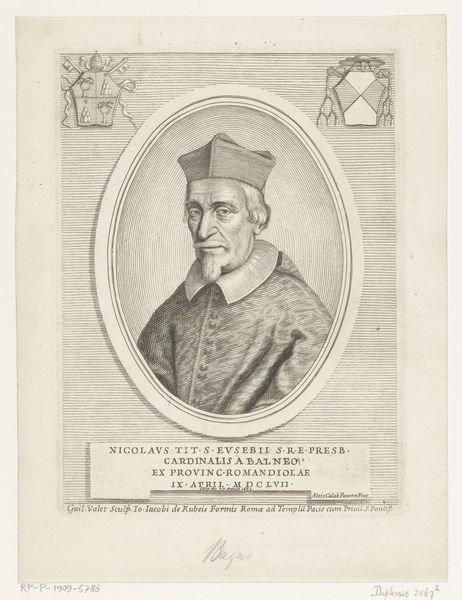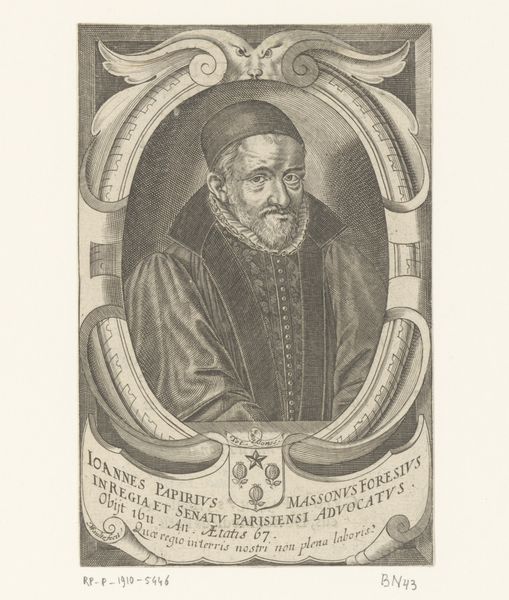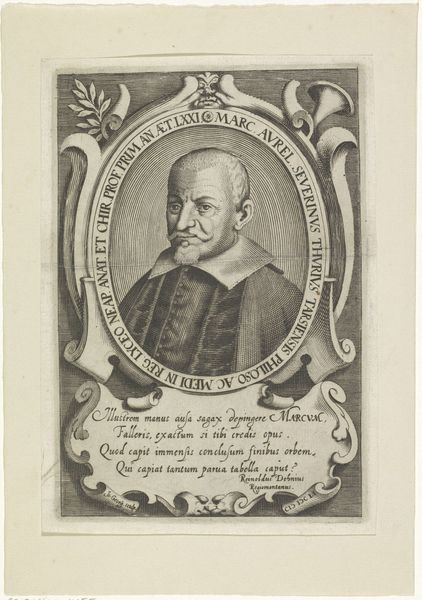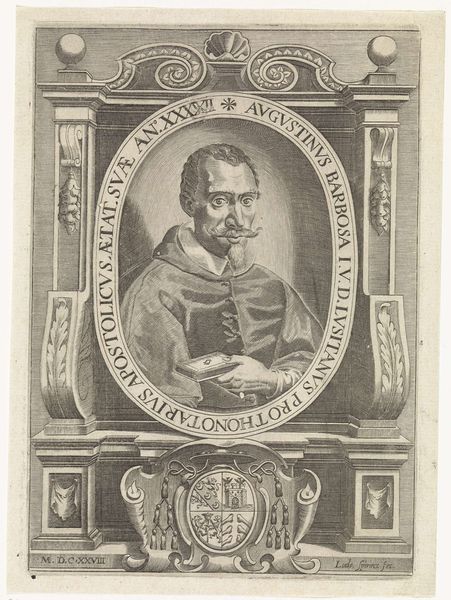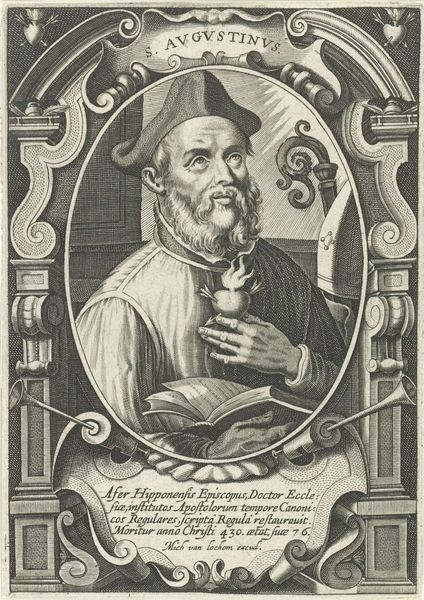
drawing, print, paper, ink, engraving
#
portrait
#
drawing
#
baroque
# print
#
paper
#
ink
#
engraving
Dimensions: height 103 mm, width 70 mm
Copyright: Rijks Museum: Open Domain
Curator: Welcome. Here we have Johann Friedrich Leonard's 1665 engraving, "Portret van Sebastian Rotenhan." Editor: It's striking. There’s a solemnity achieved with minimal tonal range; the density of the hatching builds areas of profound darkness, doesn’t it? Curator: Absolutely. And, like many portraits of the era, this print aimed to solidify Sebastian Rotenhan's social standing, depicting him as a man of importance in both civic and intellectual circles. Editor: Notice the crisp delineation of form against the textured backdrop. This contrast amplifies Rotenhan’s presence, foregrounding him in a constructed visual field. Curator: Beyond formal qualities, we must remember portraits served significant societal functions. Rotenhan, being of noble lineage, his likeness reinforced an inherited right to authority within the political landscape. It visualizes a claim to power. Editor: Yes, power dynamics manifest even through line. But also note the drapery, the way it frames Rotenhan--not just emphasizing the importance of the portrayed, but functioning almost as theatrical prop? The way the ink weight subtly varies brings the fabric alive. Curator: Considering socio-historical implications provides perspective. These aren’t detached aesthetic exercises, are they? Representing people like Rotenhan underscored social structures and hierarchies, which impacted most peoples' lived experience in very concrete ways. Editor: Undoubtedly, but through the artistic application we access a record; by understanding technique we grasp intent. The stark style conveys the status with efficiency; what a different message a looser sketch would bring. The visual language is crucial. Curator: Examining Leonard's choices through a combined lens is key. Understanding both the engraving's historical weight and appreciating how line, texture, and form interact help us interpret its power, which stems not from aesthetic purity, but the representation of social order. Editor: Indeed. This focused conversation, uniting the ‘why’ and ‘how’, opens new interpretive pathways within this delicate, historical artwork.
Comments
No comments
Be the first to comment and join the conversation on the ultimate creative platform.
